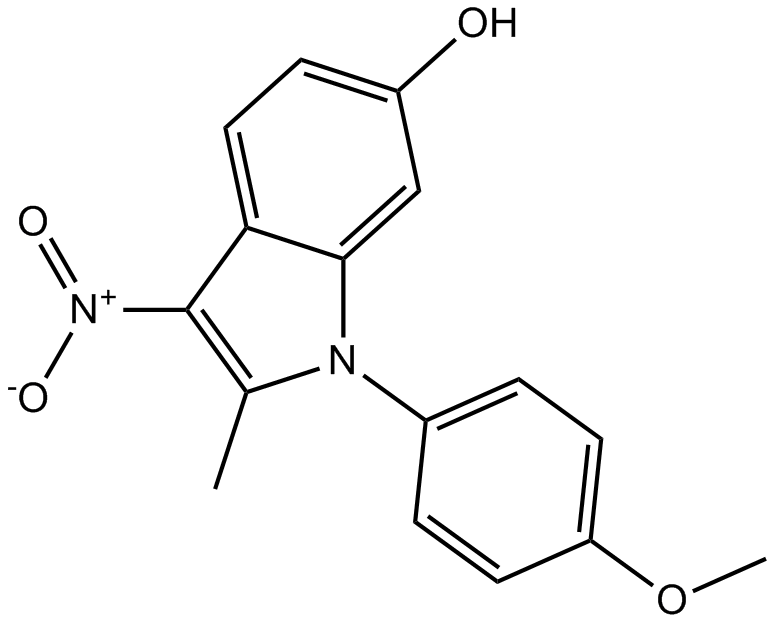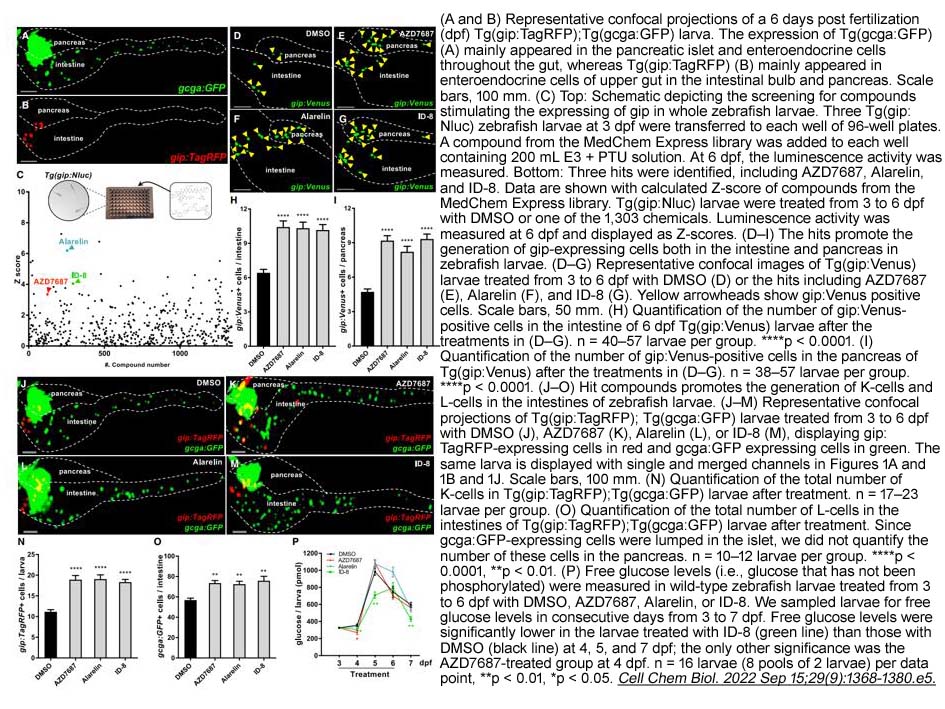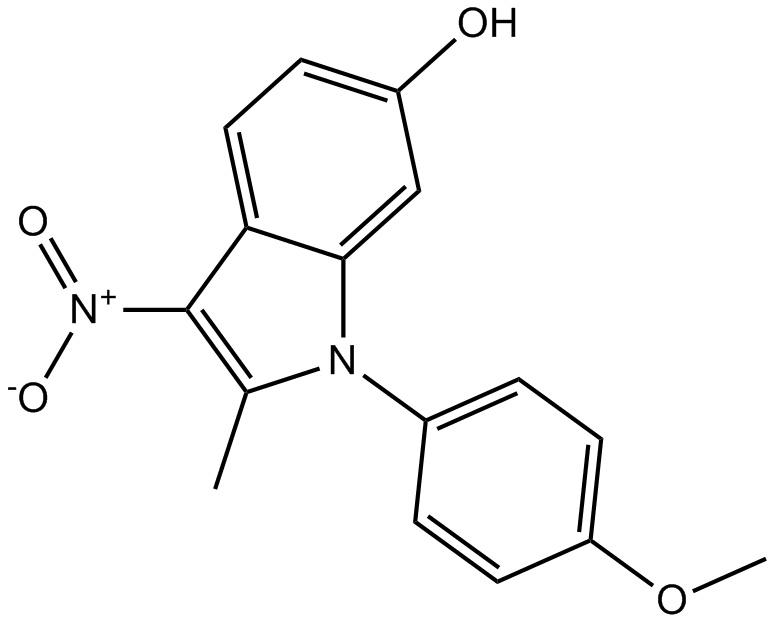ID-8
ID-8 is a small molecule inhibitor of DYRK [1].
Dual-specificity tyrosine phosphorylation-regulated kinase (DYRK) is an enzyme that catalyzes autophosphorylation on tyrosine and serine/threonine residues.
ID-8 is a small molecule DYRK inhibitor. In HES2 cells, ID-8 (0.5 μM) increased hESC survival by 1.1%. The combination of ID-8 and Wnt3a increased survival by 1.7% and completely inhibited Wnt-induced morphological differentiation. Also, ID-8 significantly reduced the expression of differentiation marker gene GATA6, GSC, SOX17 and CDX2 induced by Wnt. In hESCs, ID-8 increased Wnt-mediated hESC proliferation and survival via inhibition of DYRKs. Also, DYRK family is direct targets of ID-8 [1]. In embryonic stem cells (ESCs), ID-8 (10 μM) stimulated proliferation in culture without MEFs, serum or LIF. The ID-8 induced ESCs showed the ability to form all three germ layer-derived tissues, such as liver, neurons and muscles. Also, ID-8 increased ESC differentiation and the levels of Nanog, Sox2 and Rex-1 [2]. In mouse ESCs cultured in serum-free medium, ID-8 maintained their self-renewal and pluripotency [3].
References:
[1]. Hasegawa K, Yasuda SY, Teo JL, et al. Wnt signaling orchestration with a small molecule DYRK inhibitor provides long-term xeno-free human pluripotent cell expansion. Stem Cells Transl Med, 2012, 1(1): 18-28.
[2]. Miyabayashi T, Yamamoto M, Sato A, et al. Indole derivatives sustain embryonic stem cell self-renewal in long-term culture. Biosci Biotechnol Biochem, 2008, 72(5): 1242-1248.
[3]. Firestone AJ, Chen JK. Controlling destiny through chemistry: small-molecule regulators of cell fate. ACS Chem Biol, 2010, 5(1): 15-34.
| Physical Appearance | A solid |
| Storage | Store at -20°C |
| M.Wt | 298.29 |
| Cas No. | 147591-46-6 |
| Formula | C16H14N2O4 |
| Solubility | insoluble in H2O; insoluble in EtOH; ≥13.95 mg/mL in DMSO |
| Chemical Name | 1-(4-methoxyphenyl)-2-methyl-3-nitroindol-6-ol |
| SDF | Download SDF |
| Canonical SMILES | CC1=C(C2=C(N1C3=CC=C(C=C3)OC)C=C(C=C2)O)[N+](=O)[O-] |
| Shipping Condition | Small Molecules with Blue Ice, Modified Nucleotides with Dry Ice. |
| General tips | We do not recommend long-term storage for the solution, please use it up soon. |
| Cell experiment [1]: | |
|
Cell lines |
D3ES embryonic stem cells (ESCs) |
|
Preparation method |
The solubility of this compound in DMSO is >13.95mg/mL. General tips for obtaining a higher concentration: Please warm the tube at 37℃ for 10 minutes and/or shake it in the ultrasonic bath for a while. Stock solution can be stored below -20℃ for several months. |
|
Reacting condition |
10 μM; more than 1 month |
|
Applications |
In D3ES embryonic stem cells (ESCs) cultured in serum-free media, ID-8 enabled ESCs to proliferate in the undifferentiated state for at least 30 d. Cells maintained in the medium supplemented with ID-8 differentiated into various cell types, such as neurons, muscles, and liver. Removal of ID-8 from the long-term culture led to ESC differentiation. ID-8 reversibly maintained the long-term culture of ESCs by sustaining Nanog gene expression through Sox2-Oct3/4 activation. |
|
References: [1]. Miyabayashi T, Yamamoto M, Sato A, et al. Indole derivatives sustain embryonic stem cell self-renewal in long-term culture. Biosci Biotechnol Biochem, 2008, 72(5): 1242-1248. |
|
Quality Control & MSDS
- View current batch:
Chemical structure

Related Biological Data








